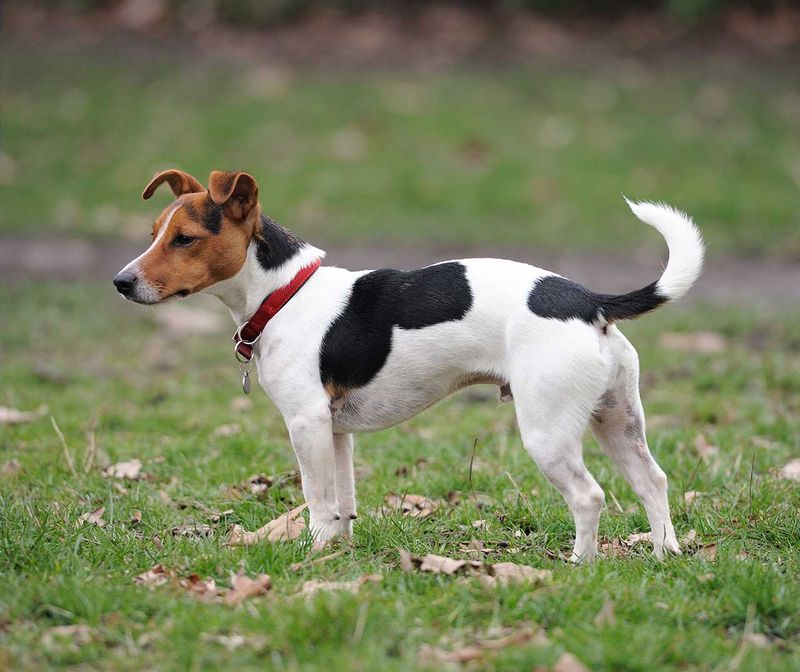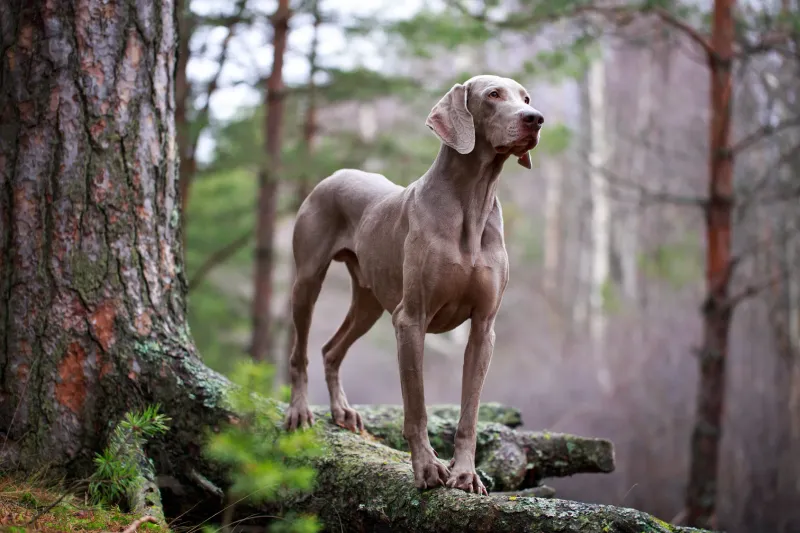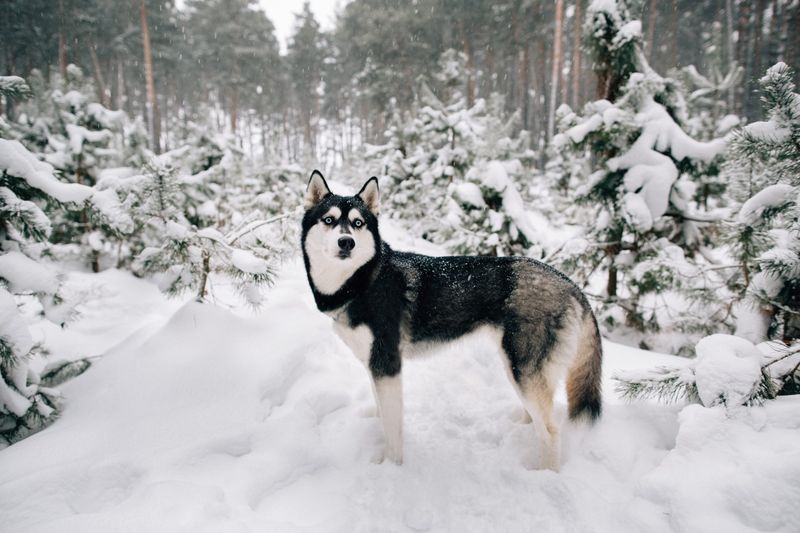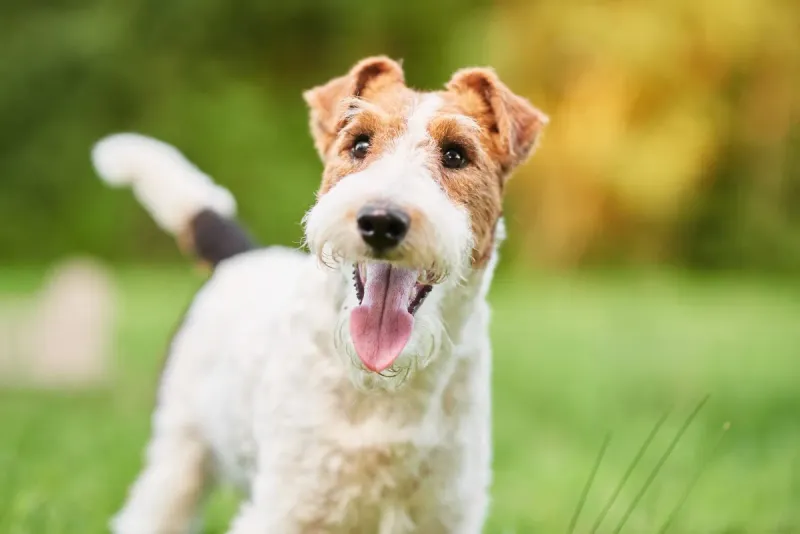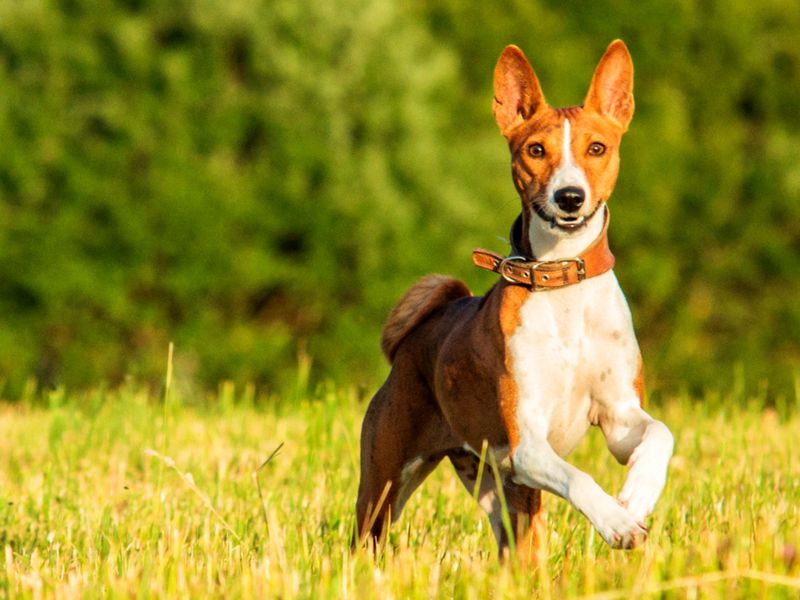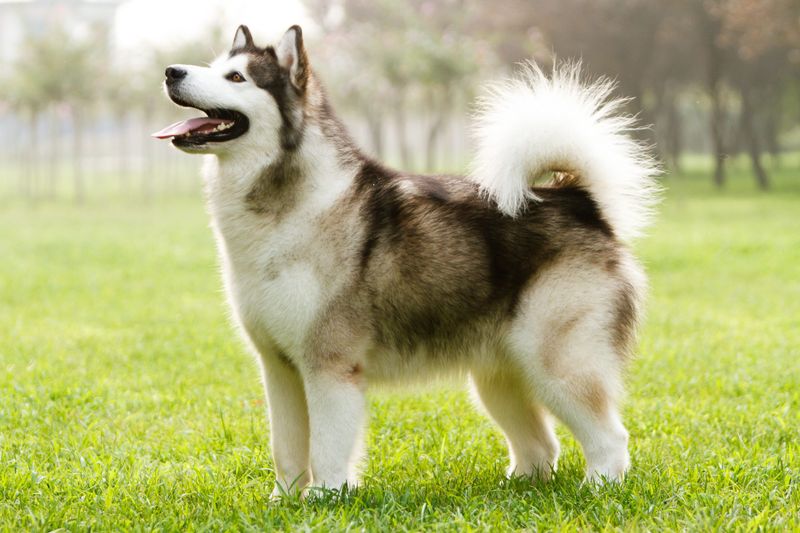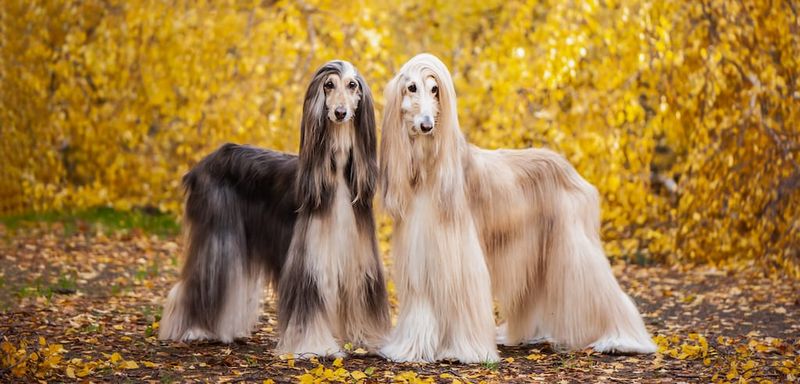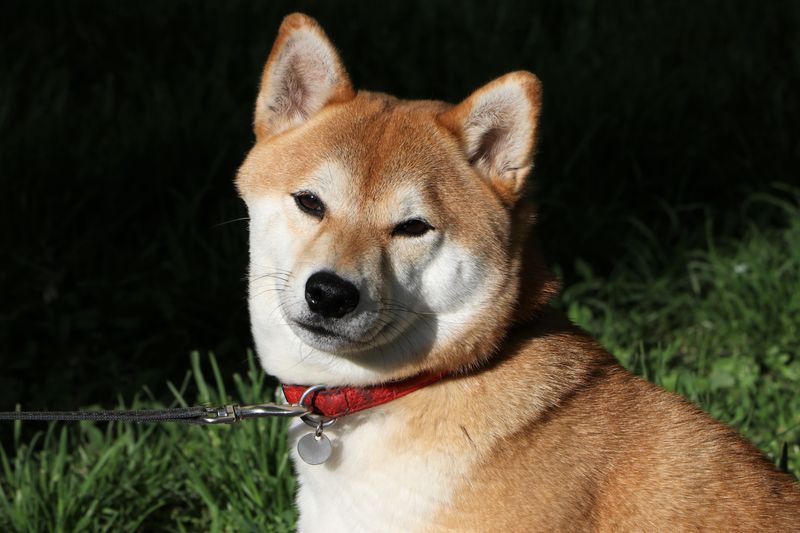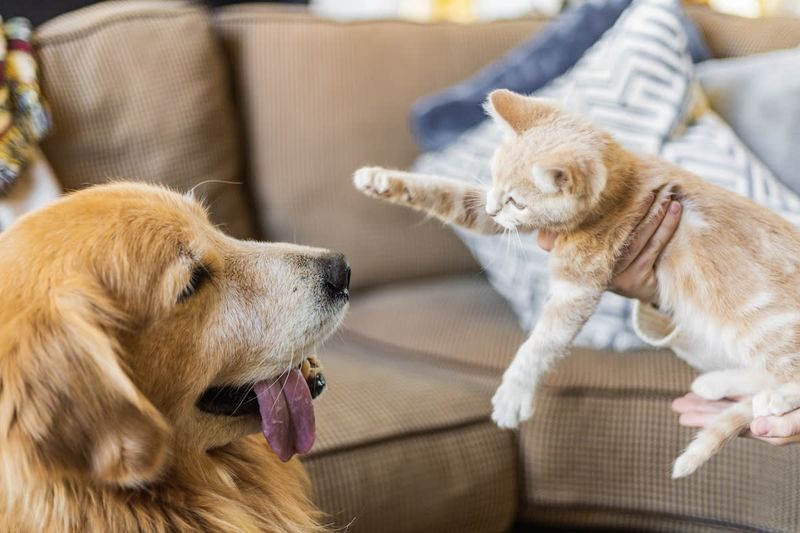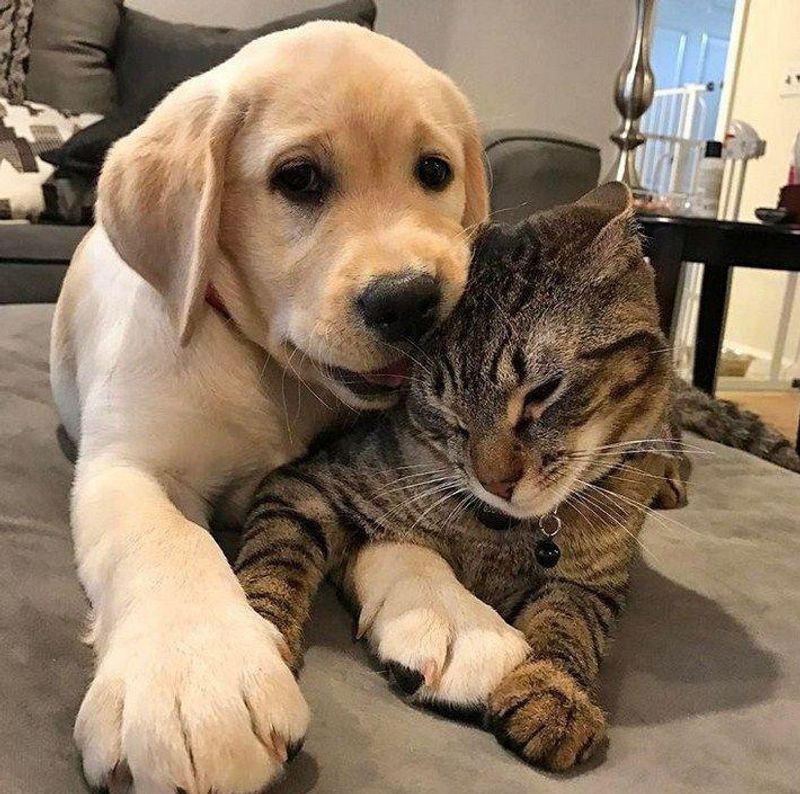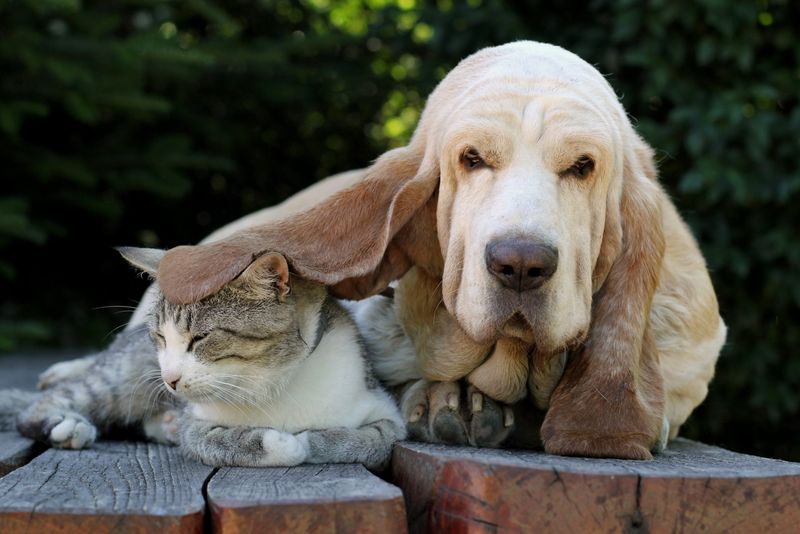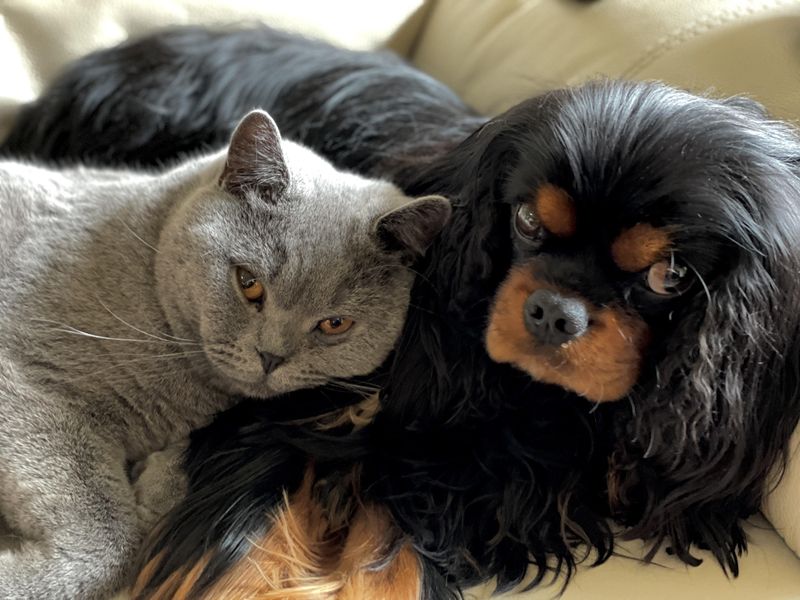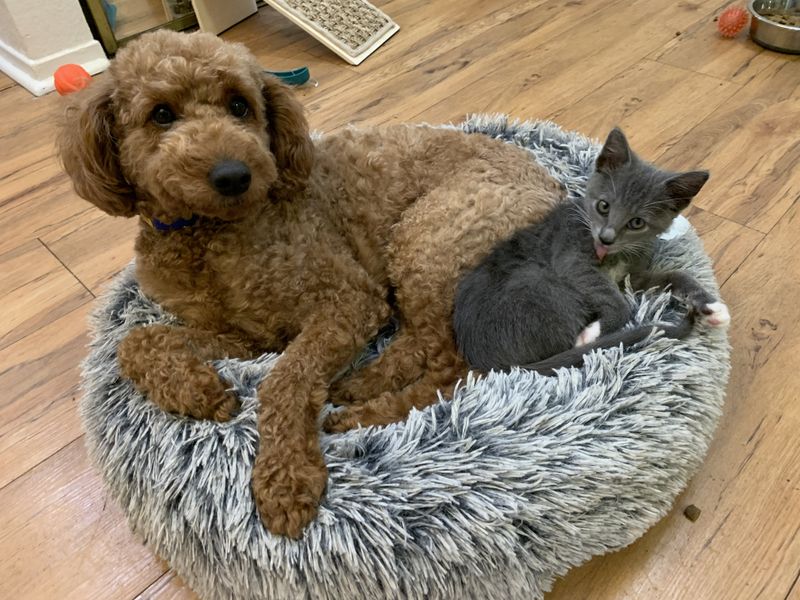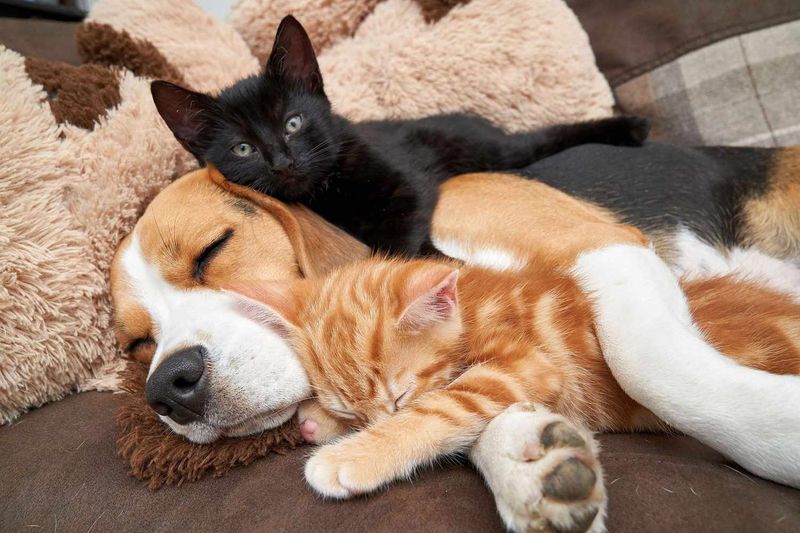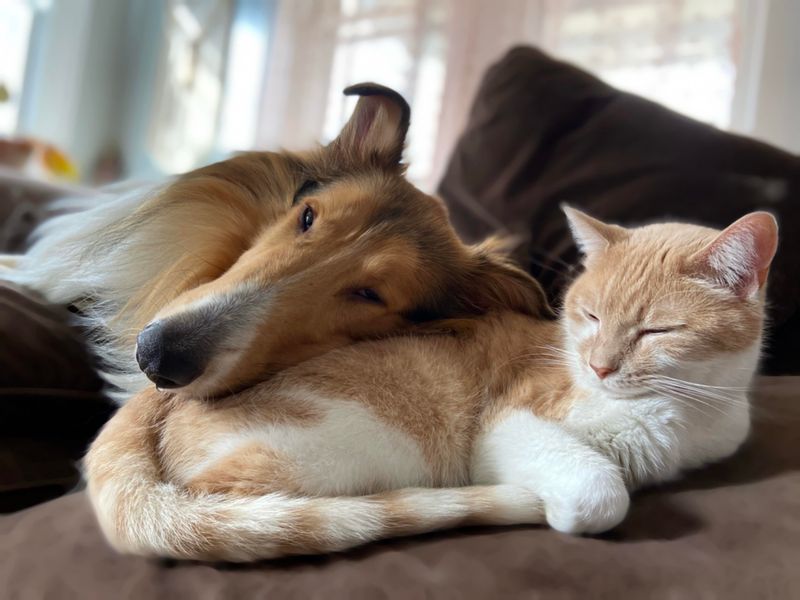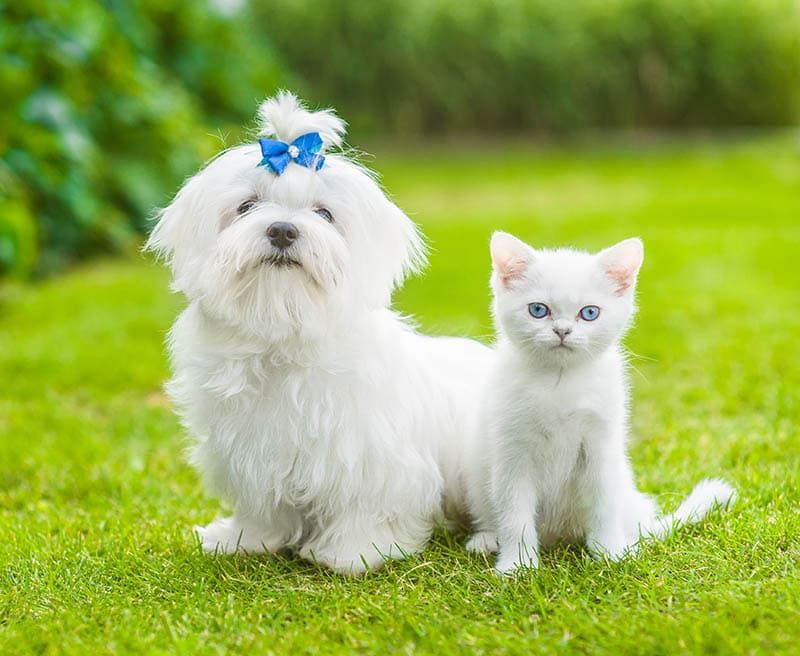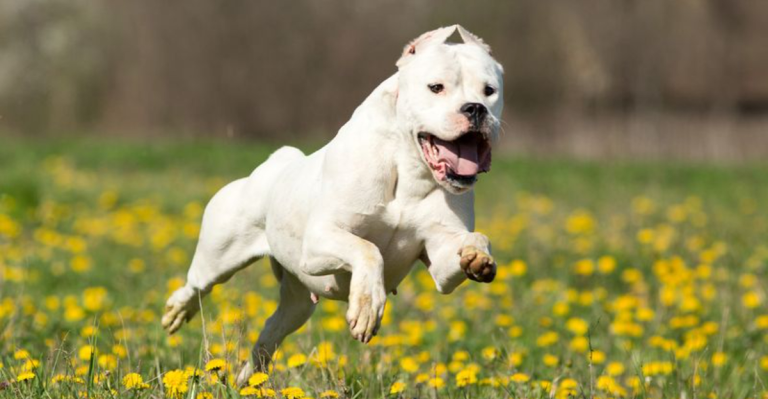10 Dog Breeds That Don’t Like Cats & 10 Others That Are Feline-Friendly
Some dogs and cats live in perfect harmony, curling up together like they’ve been best friends forever. Others? Well, let’s just say things get a little more… dramatic.
If you’re a cat owner thinking about bringing a dog into the mix—or vice versa—it pays to know which breeds are most likely to play nice and which ones might see your feline as a chew toy.
Not all dogs are natural-born cat haters, but some come hardwired with hunting instincts or dominant personalities that make peaceful cohabitation tricky.
On the flip side, plenty of pups have hearts big enough for everyone in the house, whiskers and all. In this guide, we’ve rounded up 10 dog breeds that generally don’t get along with cats—and 10 others that are more than happy to share the sofa.
1. Greyhound
Despite their calm personalities, Greyhounds are built for speed—and for chasing. They were bred to pursue game animals, and unfortunately, many still see cats as just that.
Even a well-mannered Greyhound might struggle to resist the urge to sprint after a darting feline.
Early socialization helps, but it’s not a guarantee with this breed. Because of their racing history, they can be triggered by movement alone.
Some ex-racers have been successfully integrated into cat households, but it takes time, training, and lots of patience.
If you’re considering a Greyhound with a cat at home, you’ll want a very slow, supervised introduction. And even then, make sure your cat always has a fast escape route.
2. Jack Russell Terrier
Terriers are tiny dynamos—and Jack Russells are the most intense of them all. These dogs are fearless, high-energy, and have a laser-sharp prey drive. Chasing anything that moves is practically their life’s mission.
Cats, unfortunately, are irresistible targets. Even if raised together, a Jack Russell might see a cat as competition or a challenge. Their stubborn streak makes them hard to redirect once they’re focused on a chase.
Some owners manage a truce between the two, but it’s not the norm. Unless you have a very bold cat and a super-patient training plan, this combo can spell chaos.
3. Weimaraner
Weimaraners are smart, striking, and incredibly driven dogs. Bred for hunting, they have a strong instinct to track and pursue. Cats can spark that impulse instantly, especially if they run.
These dogs thrive on activity and stimulation, which means boredom often leads to mischief.
That mischief could involve chasing—or even harming—your unsuspecting cat. They’re also highly energetic and need outlets for their instincts.
Without constant training and early socialization, they’re tough to manage in multi-pet homes. You might get lucky with a mellow cat and a calm Weimaraner, but don’t count on it.
4. Siberian Husky
Beautiful, bold, and built for endurance, Siberian Huskies are true adventurers. But their prey drive? It’s intense. Cats, squirrels, birds—anything that moves quickly could trigger their chase response.
Even a well-socialized Husky might have trouble seeing a cat as a roommate instead of a target. They’re pack animals, sure, but they don’t always welcome other species into the fold. Training helps, but their stubbornness makes consistency tough.
Many Huskies are simply too independent to follow house rules around smaller pets. It’s not impossible, but it’s definitely not easy.
5. Fox Terrier
With boundless energy and a terrier’s natural boldness, Fox Terriers are feisty companions. They were originally bred to chase and flush out foxes—so guess what that means for your cat?
That same drive kicks in at the sight of fast-moving, furry friends. Even a tail flick from your cat might be enough to set them off. They’re also territorial and often dominant, which creates tension fast.
Their playful nature can cross the line into harassment if not curbed. While some owners have made it work, it often requires rigorous training and separation.
6. Basenji
These quiet dogs don’t bark—but that doesn’t mean they’re passive. Basenjis are clever, curious, and extremely independent. They also happen to have a high prey drive and a love for chasing.
Cats don’t usually appreciate their intense stares or sudden zoomies. Because they’re less domesticated than other breeds, their instincts are harder to override. Even training doesn’t always stick with Basenjis—they do what they want.
Their alert, watchful nature makes them unpredictable in multi-pet households. If your cat’s the shy or nervous type, things could get rocky fast.
7. Irish Wolfhound
Massive and majestic, Irish Wolfhounds might not seem like typical cat chasers. But don’t let their size fool you—these dogs were bred to hunt wolves. That ancient instinct can sometimes resurface around small animals.
Though generally calm, they can get triggered by sudden movement or high-pitched noises. With some, the problem isn’t aggression—it’s unintentional roughness. They may not mean to hurt your cat, but one swat from a huge paw can be dangerous.
Supervision is key, especially if your dog and cat weren’t raised together. They might coexist peacefully—or things could turn south in an instant.
8. Alaskan Malamute
Fluffy and striking, Malamutes look like gentle giants—but don’t be fooled. They have a deeply rooted prey drive, passed down from their sled-pulling, hunting ancestors. Cats often fall into the “prey” category in a Malamute’s mind.
They’re also incredibly stubborn, and training takes serious consistency. If they decide your cat’s an intruder, it’s hard to change their mind. Even with good socialization, some Malamutes can’t resist the chase.
They’re strong and fast, so even a playful pursuit can turn dangerous. Think twice before bringing one into a home with small pets.
9. Afghan Hound
Elegant and aloof, Afghan Hounds were bred to run—and chase. These sleek sprinters can reach high speeds in seconds. That makes a fleeing cat the perfect moving target.
Afghans are independent and not particularly eager to please, which complicates training.
They’re also sensitive and get overwhelmed easily, especially in chaotic multi-pet homes. Some owners describe them as cat-like themselves—but they don’t always tolerate actual cats.
They may ignore them entirely or view them as a curiosity. Either way, the relationship is rarely warm or predictable.
10. Shiba Inu
Small but fierce, the Shiba Inu is one of the most stubborn dog breeds around. They’re known for their foxlike appearance and equally foxy attitude. Dominant and proud, Shibas rarely tolerate sharing their space.
Cats that challenge their authority or get in their way may regret it. They’re intelligent but not eager to follow commands, especially if it doesn’t benefit them. While some Shibas raised with cats can learn to coexist, it’s not guaranteed.
Even then, it’s more of a polite truce than a warm friendship. Supervision is essential, and harmony isn’t always in the cards.
11. Golden Retriever
There’s a reason Golden Retrievers are the poster pups for friendliness. These dogs are gentle, patient, and incredibly tolerant—even with curious cats. They’re social creatures who usually want to be everyone’s friend, including the feline kind.
Goldens rarely show aggression and are more likely to share a nap than start a fight. They thrive in households with kids, other dogs, and yes, cats too. Even if a cat swats or hisses, Goldens typically respond with a wag.
Their laid-back nature makes them ideal for peaceful cohabitation. Early socialization helps, but even as adults, they tend to adjust beautifully.
12. Labrador Retriever
Labs are friendly, fun, and adaptable—a perfect trifecta for a multi-pet home. They’re rarely territorial and tend to welcome cats with curiosity, not conflict. Their eagerness to please means they respond well to training and boundaries.
Even if your cat isn’t thrilled at first, Labs usually win them over. They’re playful but not overly rough, so they can match a cat’s energy—or lack thereof. With proper introductions, most Labradors learn to respect feline space.
They’ll likely follow the cat around until friendship blossoms. If you want harmony between species, a Lab is a great bet.
13. Basset Hound
Basset Hounds are masters of chill. With their droopy eyes and slow gait, they’re more likely to snore near your cat than chase it. They have a calm demeanor and don’t typically see cats as competition.
In fact, many seem completely indifferent to feline roommates. Because they’re not high-energy, they don’t overwhelm shy or older cats. They’re also not territorial, so sharing space isn’t a problem.
Bassets are affectionate without being pushy, which cats tend to appreciate. Add in their goofy charm, and you’ve got a surprisingly cat-compatible companion.
14. Cavalier King Charles Spaniel
Cavaliers are tiny charmers with big hearts. They’re known for getting along with just about everyone—including cats. Their sweet, affectionate nature makes them ideal for peaceful coexistence.
Even better, they’re not aggressive or territorial. They’d rather curl up on your lap—or next to your cat—than start drama. Because they’re so gentle, they’re unlikely to scare off even the most timid felines.
They also read social cues well and don’t push boundaries. With proper introductions, a Cavalier and a cat can become inseparable nap buddies.
15. Poodle (Toy, Mini, or Standard)
Poodles are smart, sociable, and easy to train. That makes them excellent candidates for living with cats. They pick up on household rules quickly—including how to behave around feline friends.
Even their playful side tends to be respectful, not pushy. Poodles are also highly adaptable and attuned to their environment. They usually respond calmly to a cat’s presence, especially with early exposure.
Whether you’ve got a toy or a standard, they’re rarely aggressive or territorial. With supervision and a few treats, harmony isn’t far off.
16. Papillon
Don’t let their small size fool you—Papillons are bold, bright, and friendly. They tend to get along with cats because they’re confident but not overbearing. These dogs love companionship and often see cats as potential playmates.
Because they’re so social, they adapt quickly to new pets in the household. They’re also intelligent and easy to redirect if curiosity gets too intense. Papillons don’t have a strong prey drive, so chasing is rare.
With patience, they’ll happily share a lap or windowsill. They’re tiny ambassadors of peace in multi-pet homes.
17. Beagle
Beagles are playful, pack-oriented dogs that generally enjoy company of all kinds. While they were bred for hunting, they’re surprisingly good with cats. That’s because their instinct is to chase scents, not necessarily other animals.
They’re also gentle, goofy, and eager to please. If introduced properly, Beagles often bond with feline roommates. They’re curious, yes—but not typically aggressive.
Expect some sniffing and tail wagging, followed by cautious friendship. They’re happiest in a full household, and cats help fill that social need.
18. Boxer
Boxers may be big and bouncy, but they’re also total softies. Their playful nature means they see cats as fun companions rather than enemies. They’re not prone to aggression and often adjust their energy around smaller pets.
With supervision, they learn to read a cat’s body language and back off when needed. Boxers are also deeply loyal and loving, even with non-canine members of the family.
Early socialization makes things easier, but even adult Boxers can adapt. They just want to love—and be loved—by everyone in the home. That includes the cat.
19. Collie
Collies are famously nurturing and sensitive. These gentle herders are often the “peacekeepers” in multi-pet homes. Their calm demeanor and love for companionship make them very cat-compatible.
They’ll likely treat your cat with patience and respect. Even if the cat swats or hisses, most Collies won’t escalate the conflict. They’re highly trainable, which means they’ll respect boundaries with the right guidance.
With time, many Collies form protective bonds with feline family members. They’re just natural nurturers—no matter the species.
20. Maltese
Tiny and tender-hearted, the Maltese is one of the most cat-friendly breeds around. They’re too small to intimidate, too sweet to challenge, and too chill to care. Their relaxed personality means they won’t pester a cat for play.
Instead, they’ll usually go about their day without causing drama. They’re affectionate with their humans and can be the same with cats if raised together. Even senior cats tend to tolerate their calm energy.
Because Maltese dogs are so adaptable, they adjust well to other species. In short: they’re peaceful, polite, and perfect for cat households.


